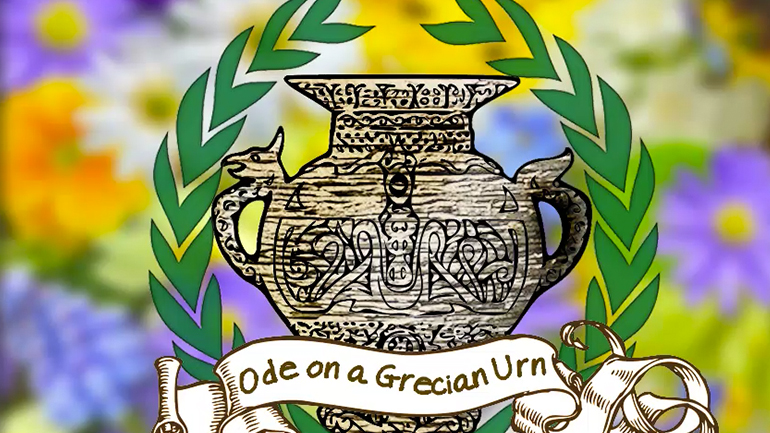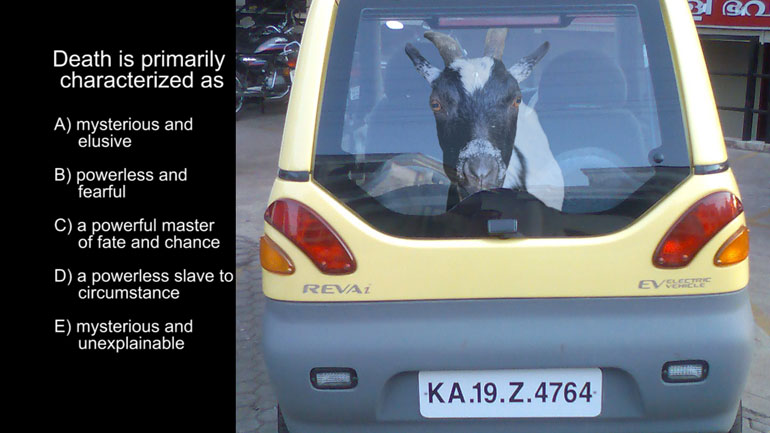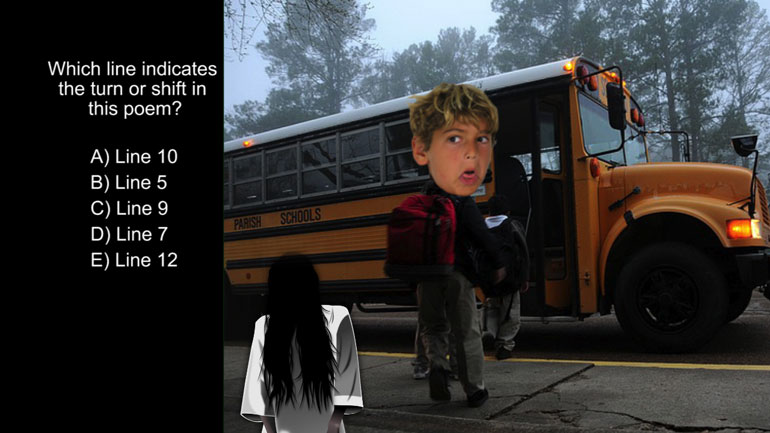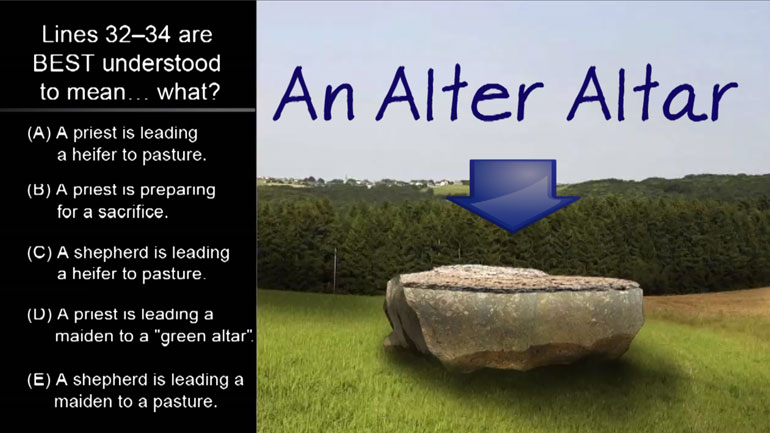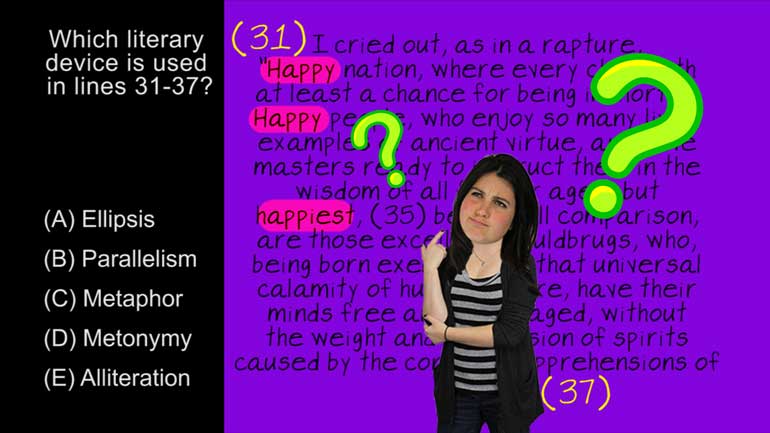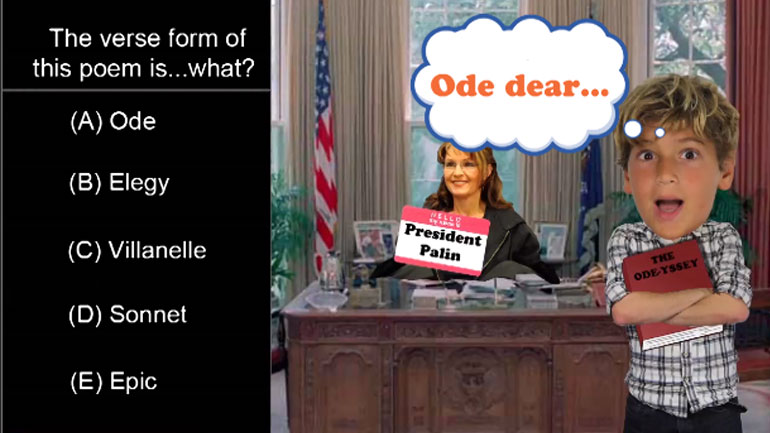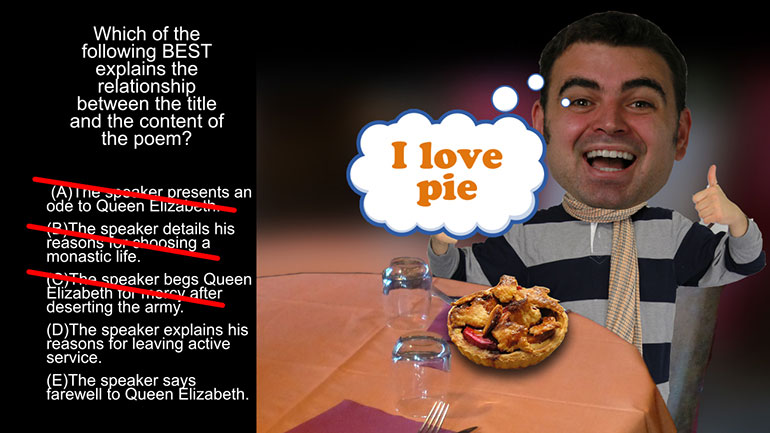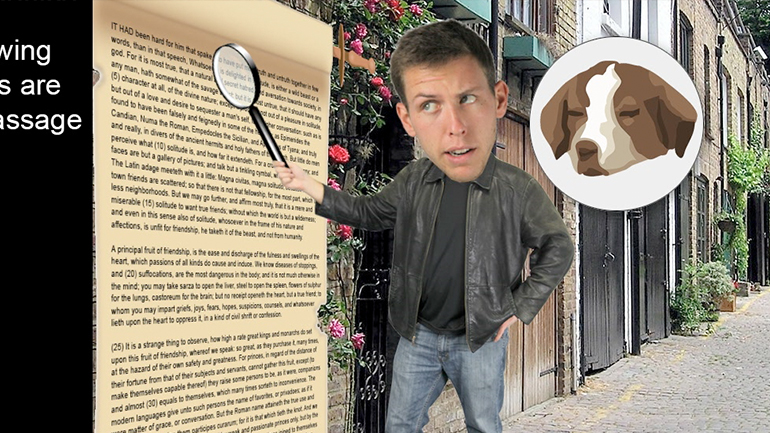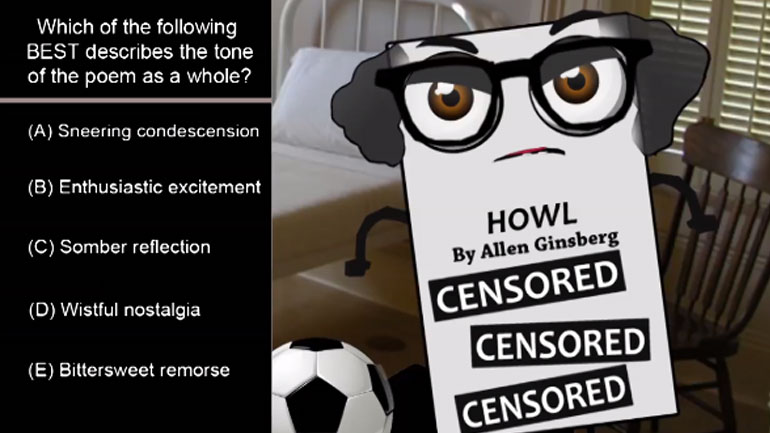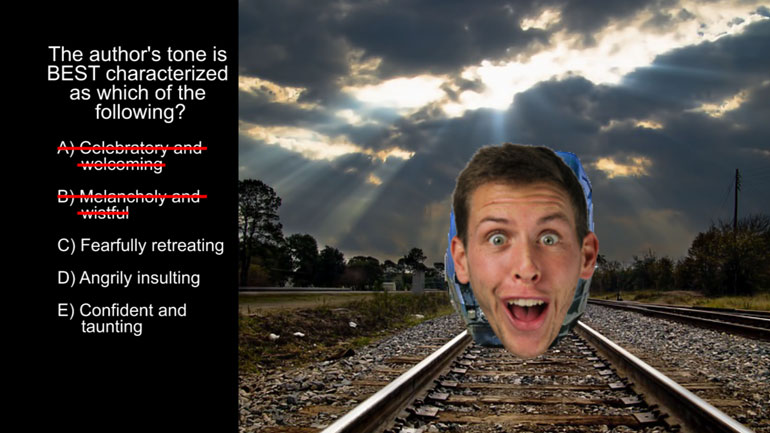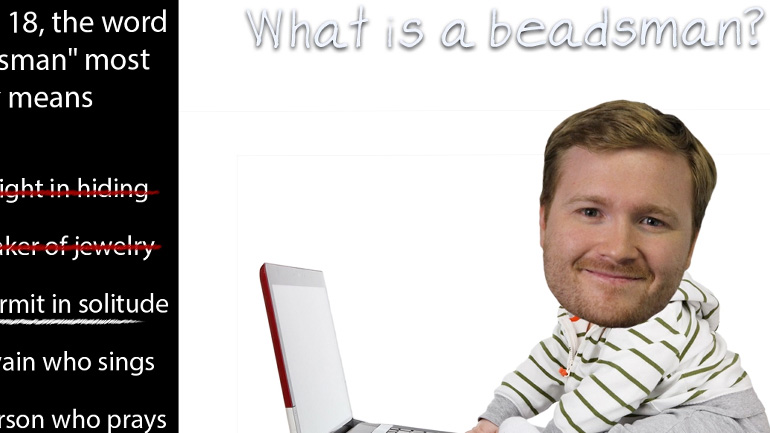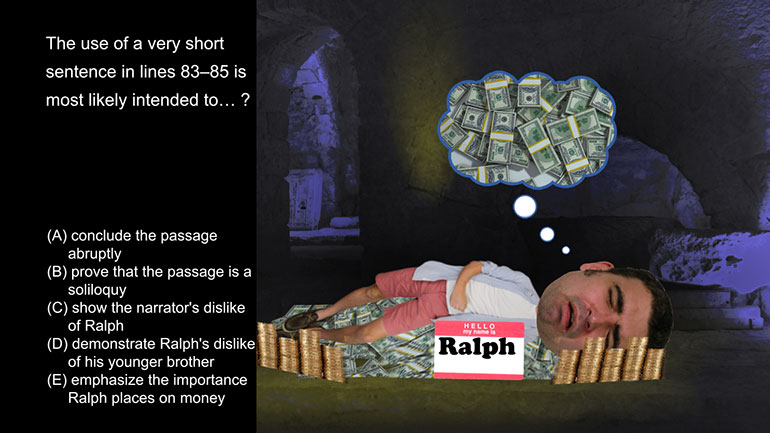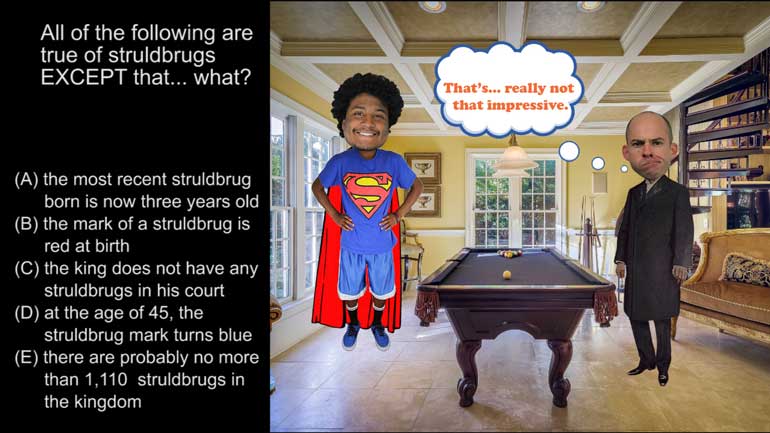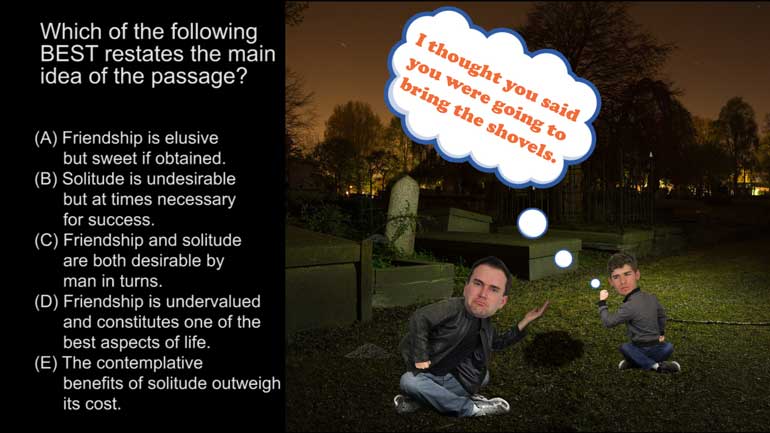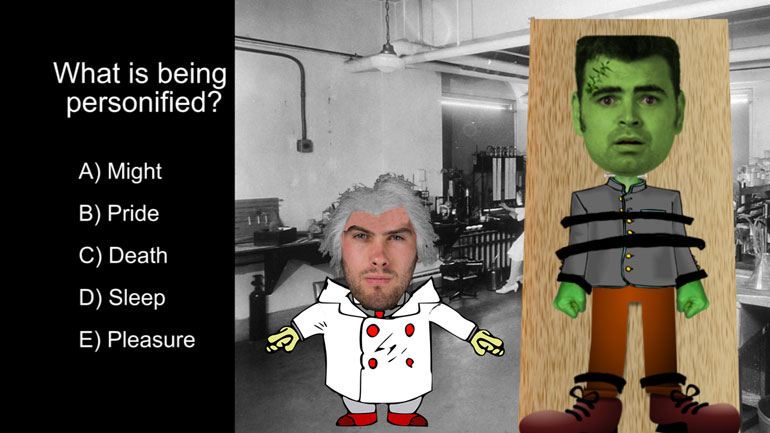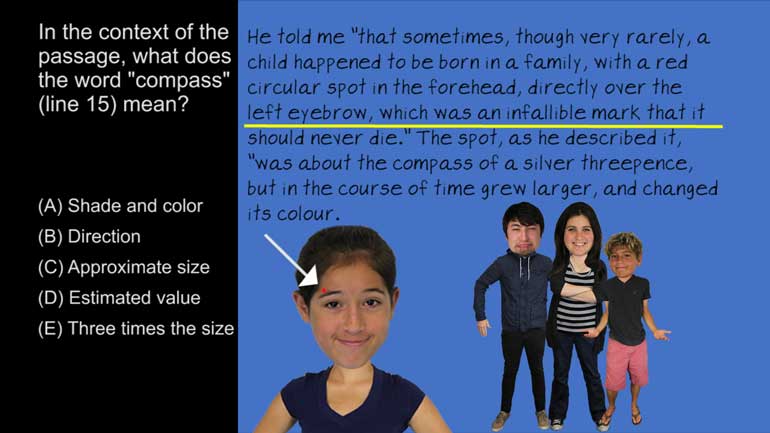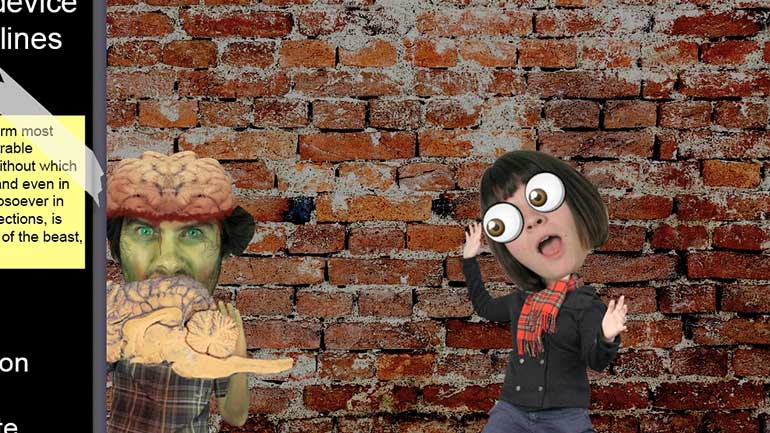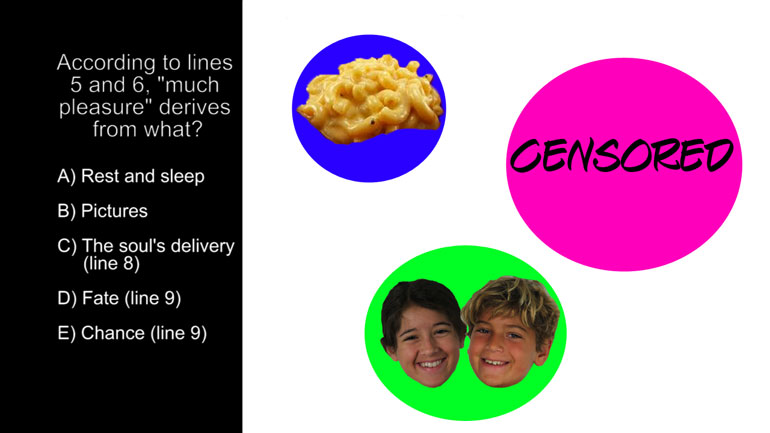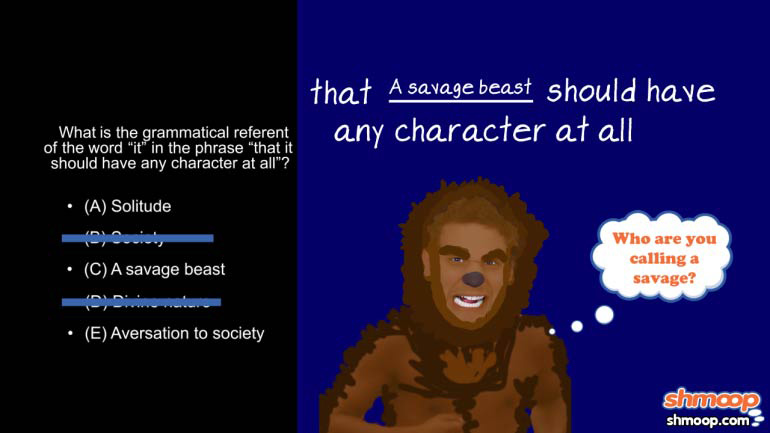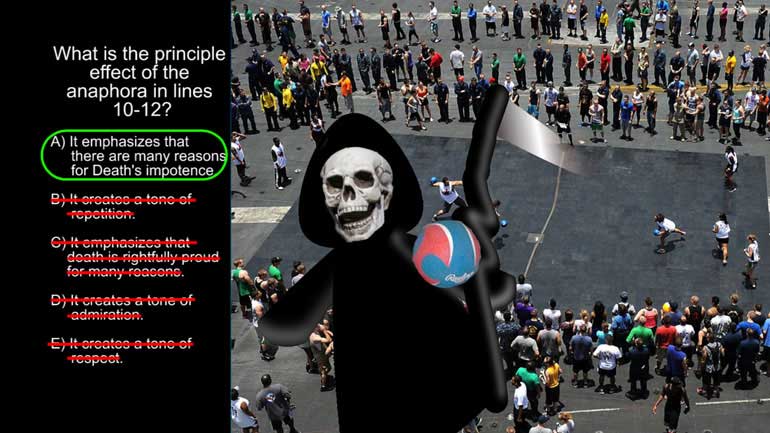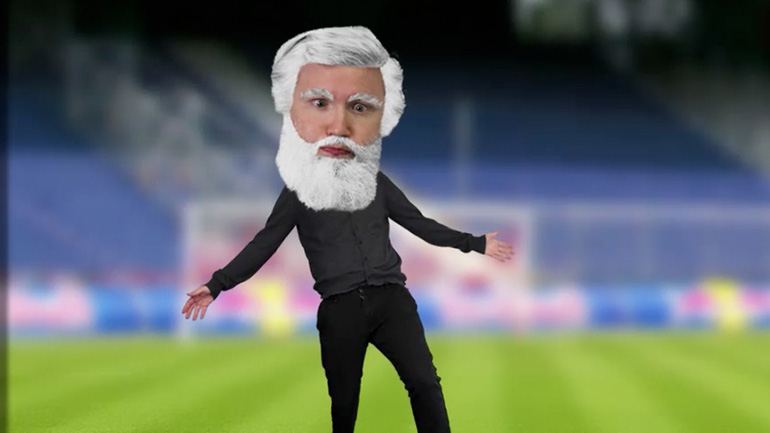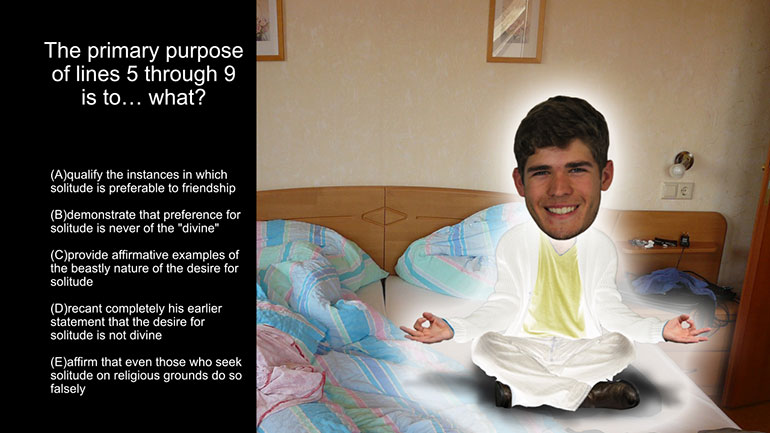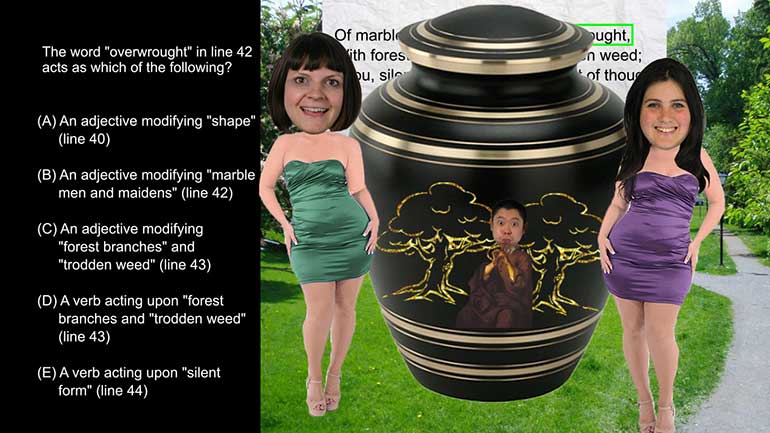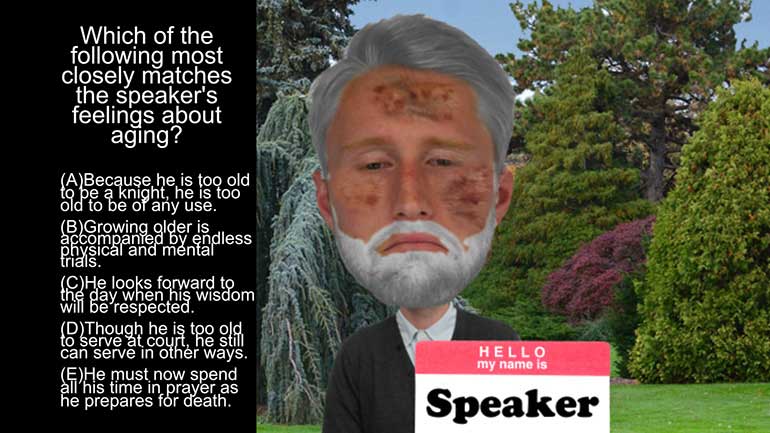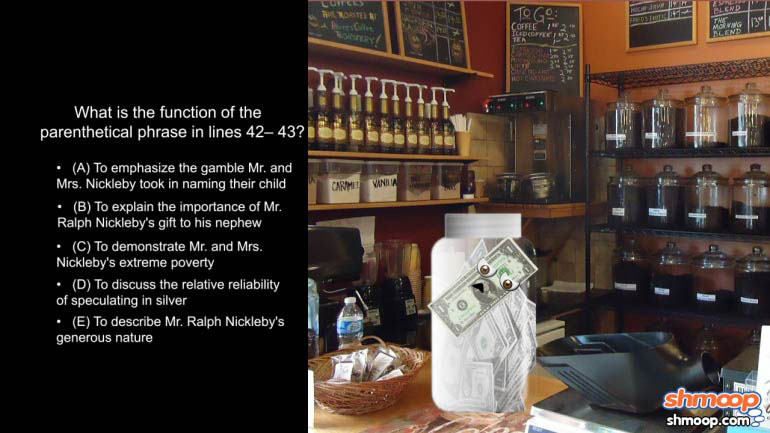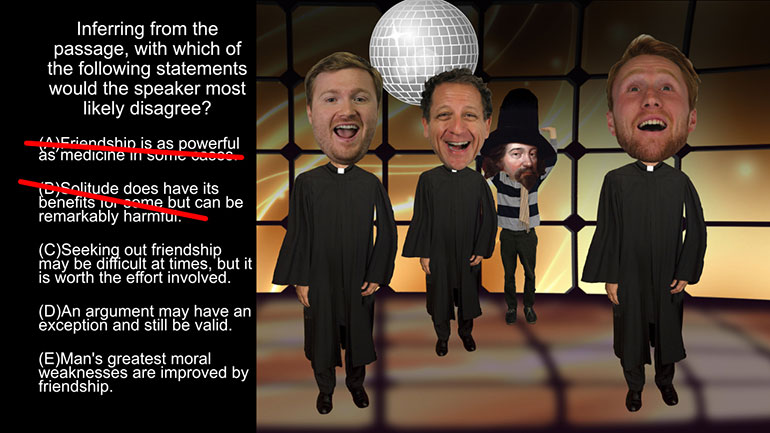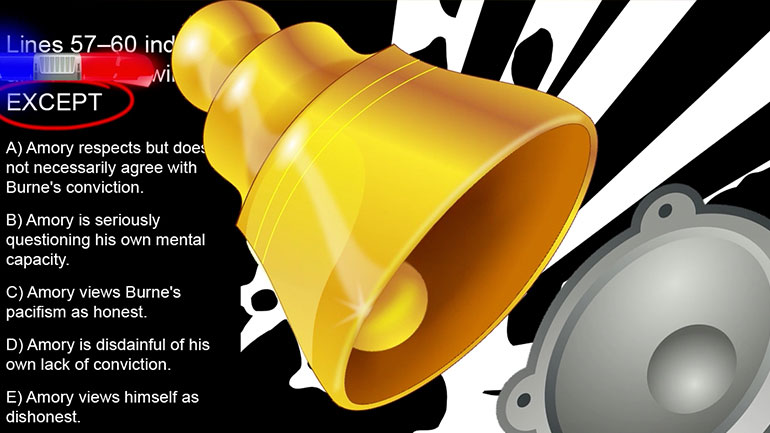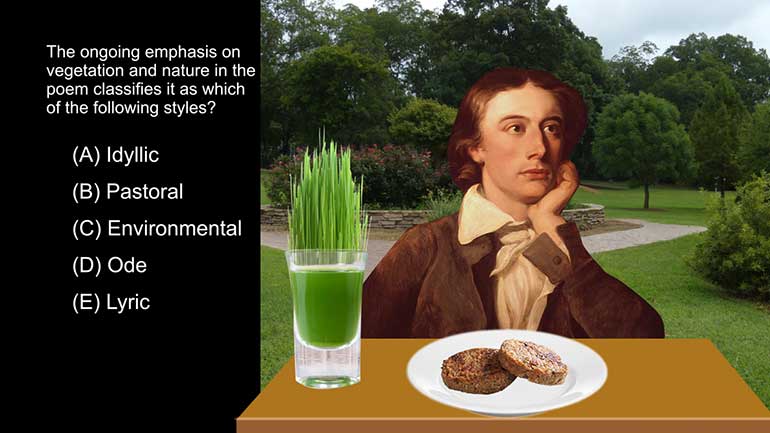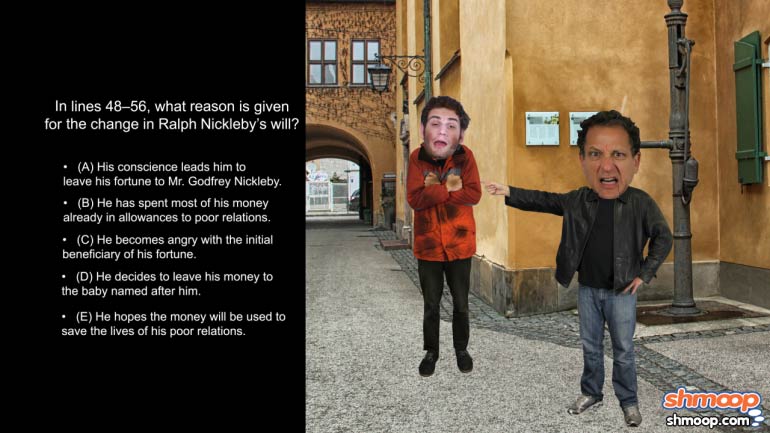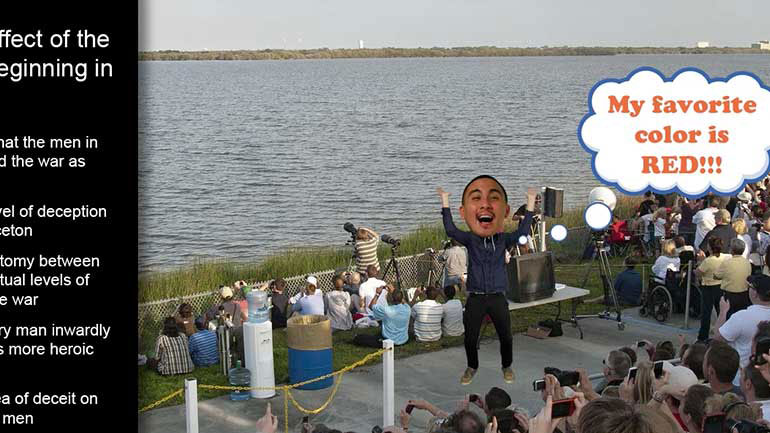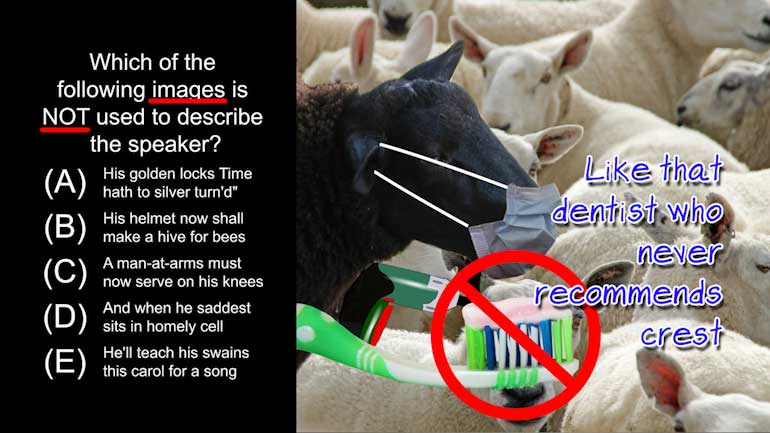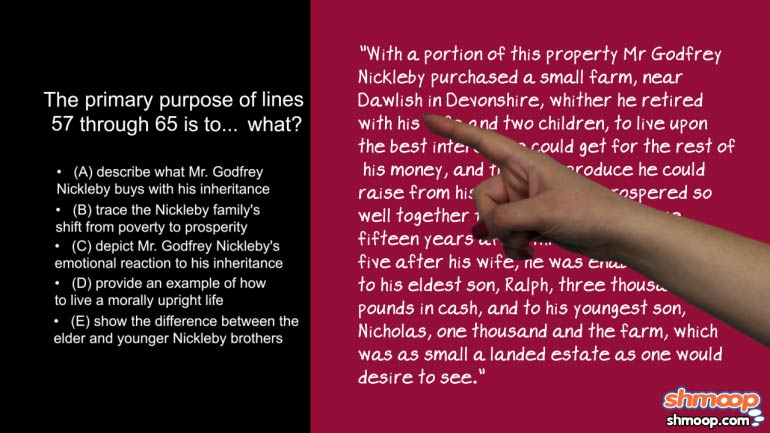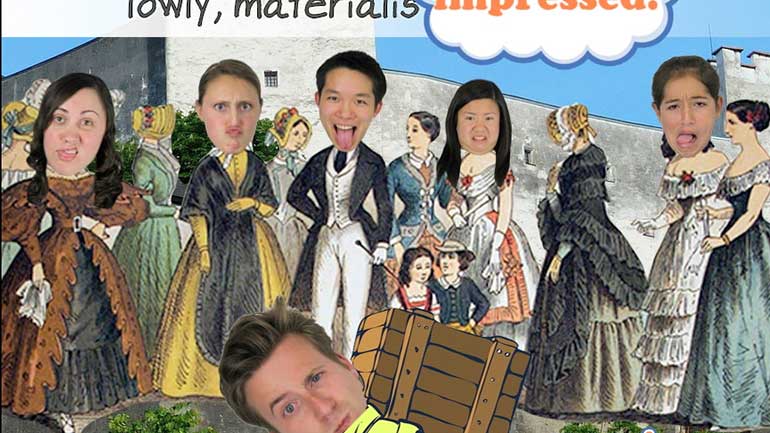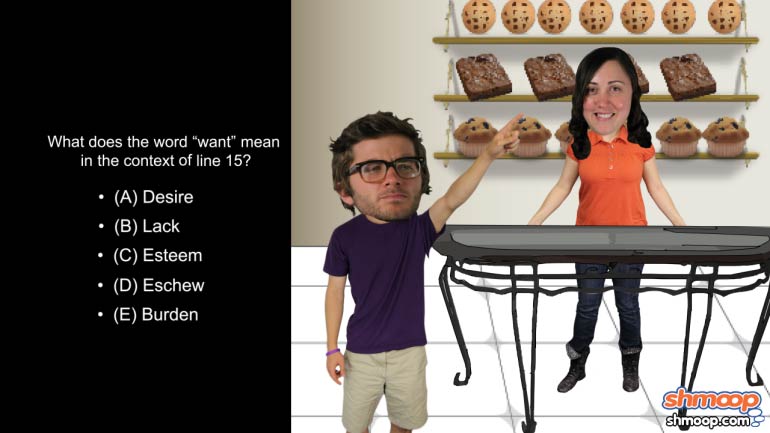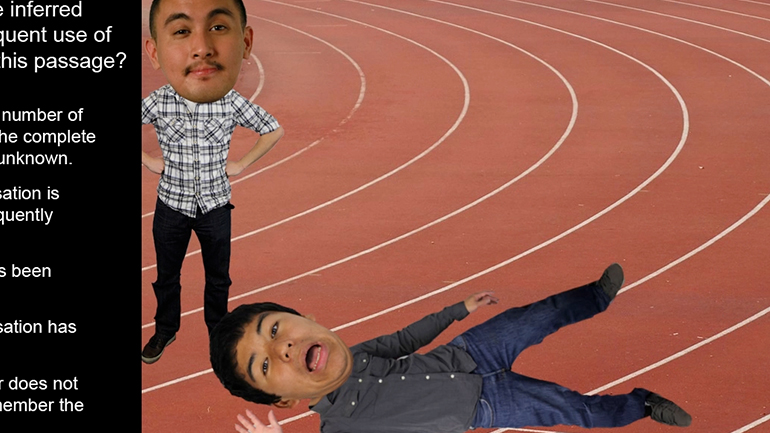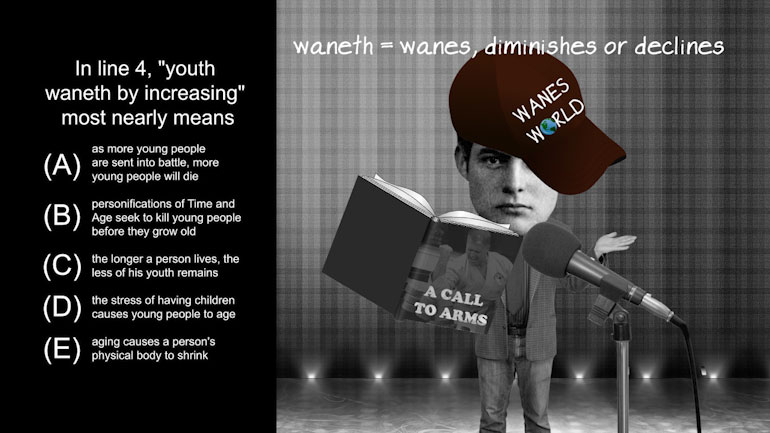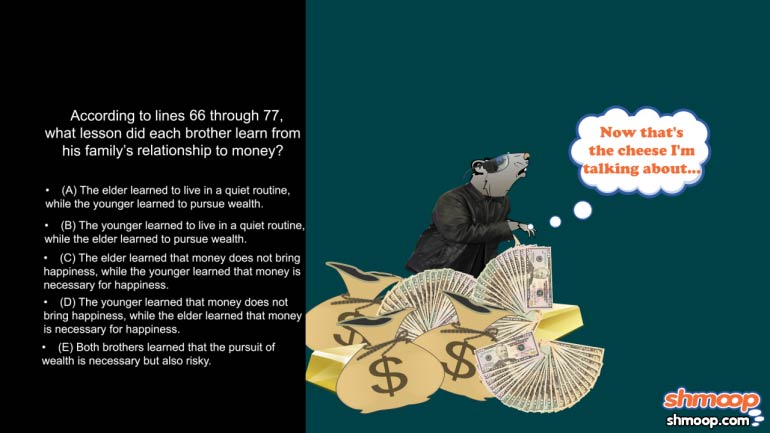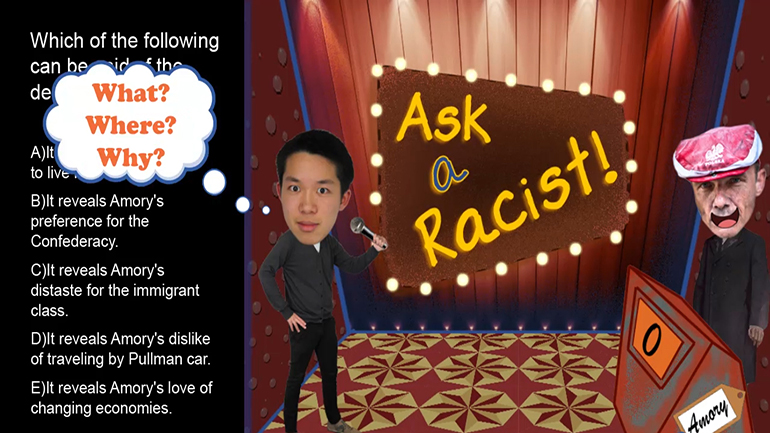ShmoopTube
Where Monty Python meets your 10th grade teacher.
Search Thousands of Shmoop Videos
Passage Drill Videos 69 videos
AP English Literature and Composition 1.2 Passage Drill 4. As which of the following is the object being personified?
AP English Literature and Composition 1.4 Passage Drill 3. How is Burne's view of pacifism best characterized in lines 57 through 67?
AP English Literature and Composition 1.6 Passage Drill 5. Death is primarily characterized as what?
AP English Literature and Composition 1.4 Passage Drill 2 252 Views
Share It!
Description:
AP English Literature and Composition 1.4 Passage Drill 2. What literary device characterizes lines 18 through 23?
- English / Imagery and Figurative Language
- Product Type / AP English Literature
- Media Literacy / Audience-specific Changes in Tone
- Conventions / Apply knowledge of language to make effective choices for meaning or style
- Conventions / Apply knowledge of language to make effective choices for meaning or style
- Conventions / Apply knowledge of language to make effective choices for meaning or style
Transcript
- 00:03
You can't handle the shmoop... It's pause and review time. Your favorite
- 00:09
time other than lunch.
- 00:23
What literary device characterizes lines 14 through 17? And here are the potential answers...
- 00:34
Okay, this one doesn't involve a ton of interpretation or comprehension...
- 00:37
...it's more of a vocab question. Either we know what these five things are or we don't.
Full Transcript
- 00:43
And if we don't... then it's time to cross our fingers, say a prayer -- if that's our
- 00:47
thing -- and take a big ol' guess. All right, first things first. What do lines
- 00:52
14 through 17 say?
- 00:57
"But we may go further, and affirm most truly, that it is a mere and miserable solitude to
- 01:02
want true friends; without which the world is but a wilderness; and even in this sense
- 01:07
also of solitude, whosoever in the frame of his nature and affections, is unfit for friendship,
- 01:13
he taketh it of the beast, and not from humanity." First of all, we don't recommend taketh-ing
- 01:19
anything from beasts.
- 01:24
Just... let them do their thing. You don't want to lose a limb unnecessarily.
- 01:29
Now... what is the author doing in this segment of the passage?
- 01:33
Is he using a simile? Nope. No occurrences of the words "like" or "as," which would have
- 01:37
been a dead giveaway.
- 01:39
Alliteration? Alliteration is the repetition of sounds at the beginning of words... and
- 01:44
it definitely appears that we have that here.
- 01:50
"Mere and miserable." "Without which the world is but a wilderness." "Sense of solitude."
- 01:59
We'd bet a barrel of badgers that B is our boy, but let's be... buh-thorough...
- 02:04
Is there a Maxim here? Not unless there's a copy of the latest issue on the nightstand.
- 02:09
Nah, C isn't it.
- 02:12
An anecdote? Well, an anecdote would be a little story... and if this is a story than
- 02:17
it is pretty short on plot. Nope, let's cross off D.
- 02:20
Assonance? Close to alliteration... but where the sounds occur in the middle of words. So
- 02:29
we can get rid of this one as well.
- 02:31
B it is. Boy, oh boy!
Related Videos
AP English Literature and Composition 1.2 Passage Drill 4. As which of the following is the object being personified?
AP English Literature and Composition 1.4 Passage Drill 3. How is Burne's view of pacifism best characterized in lines 57 through 67?
AP English Literature and Composition 1.6 Passage Drill 5. Death is primarily characterized as what?
AP English Literature and Composition 1.7 Passage Drill 5. Which line indicates the turn or shift in this poem?
AP English Literature and Composition 1.9 Passage Drill 4. Lines 32-34 are best understood to mean what?
